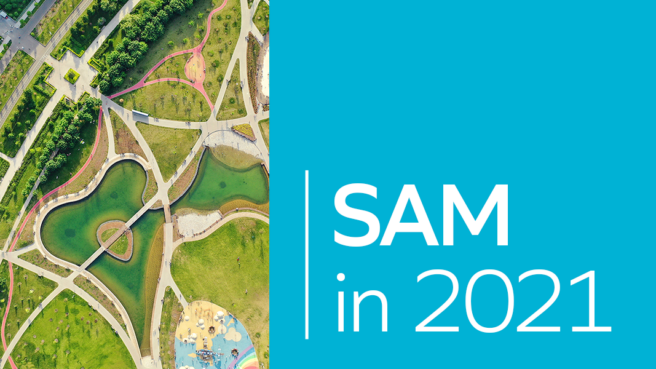SAM in 2021: Finding Success Starts with Setting Expectations

You’ve probably heard the saying; the only constant in life is change. This observation from the Greek philosopher, Heraclitus perfectly applies to software asset management (SAM) because, by its very nature, SAM is a discipline of change management.
Consider all the elements that SAM touches: hardware, software, users and the organization that relies on each of these. All these components are in a constant state of flux. As you implement a SAM strategy, it’s important to remember that building a comprehensive software asset management program is not a sprint, it’s a marathon, and there will be changes along the way.
Hardware
At the foundation of SAM is hardware (physical as well as virtual) inventory. Your inventory undergoes nearly constant changes from new equipment and retired devices to changes in processing power and the installed programs on every device.
Software
The sources of change among software are almost too varied to list. From new software tools and services coming onto the scene, to new versions that require a move from on-premises to the cloud; software is always evolving. Frequent updates that deliver operational enhancements and security fixes keep IT teams busy. End-of-life and end-of-support dates often call for IT to consider the impact their software will have on their product roadmaps, security, procurement, contract management and internal enablement.
Now, multiply these considerations by the number of licensable applications currently within your organization. On average, a 5,000-seat company will have between 350-750 licensable applications. This doesn’t include non-licensable, “free-to-use” applications which easily could push that number well into the 1,000s.
Users
People often introduce some of the biggest challenges within any organization. And, SAM managers are no exception to this. As part of the role, you need an understanding of technology’s cross-over needs among IT processes, the cloud, infrastructure, data centers, procurement, local and international law, HR, security, reporting, finance, licensing rules, regulatory requirements and more. But because of this high-value work, software asset managers are in demand and organizations must be prepared for SAM staff changes that can cause unexpected challenges.
Within an organization, joiners, movers and leavers require the adoption of numerous SAM processes. Plus, user expectations are continuously changing. In today’s on-demand, instantly available world, users have become accustomed to a certain level of availability. If users are unable to successfully download a tool, they will immediately move on to another one that can help them fulfill their needs at the moment and avoid sacrificing productivity.
Your organization
Organizations are also continuously evolving and shifting priorities and business objectives to better align with the current economic landscape, competitor moves and market drivers. To respond to these macro changes, the business will often rely on data only IT and SAM can articulate.
Three pillars of SAM success
With so much in flux, how can your SAM team find its foundation and generate the data needed to make a positive impact for the organization? As a good place to start, you can go back to the basics and begin by setting realistic expectations.
1. Realize software is an asset
Helping your organization realize software is an asset that flourishes when it is maintained is a critical first step. Communicating that software is much more than a single, expensive, ERP solution and that it’s equally important to look at all the freeware and middleware software downloaded can be half the battle. The realization that managing everything is important – not just the software you pay for – sets the groundwork for a basic understanding of SAM.
2. Ensure visibility over your full estate
Your next step should be establishing comprehensive visibility of what you currently have. But, this isn’t an easy task. Software discovery is critical but it’s never a 100% known factor, especially when you add in your entitlements. You can get your view as close to 100% as possible with the help of a SAM solution. Getting a handle on your licensed usage is your next step and, given all the changes previously outlined, this process is never complete. It’s an ongoing activity that can only be made easier by consolidating your agreements.
3. Consolidate your view of software agreements
Your organization likely relies on hundreds or even thousands of software vendors. To rein in spend and minimize costly compliance failures, a consolidated view of your agreements with these vendors is important, but certainly challenging to obtain. When it comes to getting started, begin by forming baseline entitlements and then build them out with additional data.
Your SAM strategy isn’t something that, once implemented, can be checked off your list as being “done.” It requires a trifecta of people, processes and technology. And when done well, the benefits include optimized technology spend and reduced audit and compliance risk. It’s important to also remember that SAM isn’t just a project or a race. It’s a crucial business function for your organization that will take time to set up and embed.
This post is the seventh in a series of articles on SAM. Read our previous posts for insights on SAM implementation, how-tos and more.